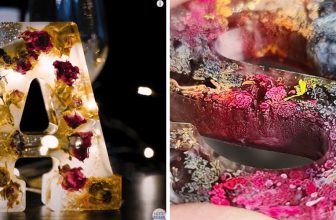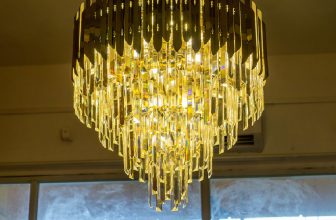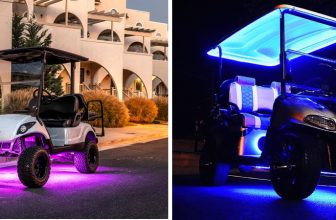How to Block Fluorescent Lights at Work
Fluorescent lights are known for causing a variety of health problems and discomfort in the workplace. These lights emit a harsh and flickering light that can contribute to eye strain, headaches, and fatigue. Fortunately, there are many ways to block fluorescent lights and create a more comfortable work environment.
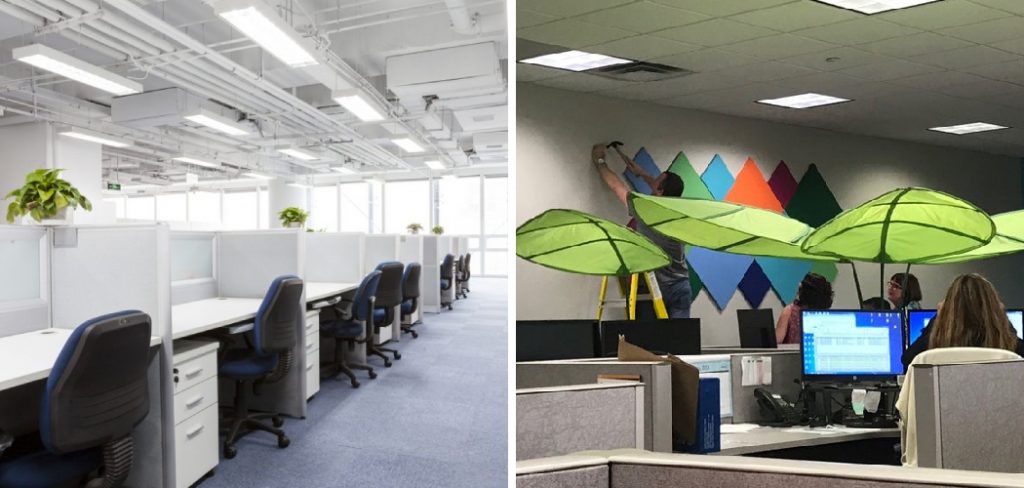
In this guide, we will explore some of the most effective methods how to block fluorescent lights at work and improve your overall well-being in the workplace.
Can You Block Fluorescent Lights at Work?
Fluorescent lights at work can sometimes be a major source of discomfort and distraction for employees. They can cause headaches and eye strain and even sometimes trigger migraines.
Thankfully, many workplaces allow employees to block fluorescent lights to alleviate these issues. There are a variety of ways to block fluorescent lights, such as using light-diffusing filters or simply covering them with something opaque.
However, it’s important to note that these solutions might not work for everyone, and some workplaces may have policies against blocking lights. If you’re unsure, it’s always best to communicate with your supervisor or HR representative to find a suitable solution that works for you.
Why Should You Block Fluorescent Lights at Work?
Fluorescent lights may not seem like a big deal, but they can significantly impact our physical and mental well-being. The harsh light can cause eye strain, headaches, and even affect our mood. Plus, the constant flickering can be distracting and make it harder to focus on work. That’s why investing in light-blocking tools, such as a special diffuser or tinted panels, is a good idea to cover your fluorescent lights at work.
By eliminating the harsh glare and flickering, you’ll be able to work more comfortably and concentrate better, which can ultimately lead to increased productivity. Not to mention, by prioritizing your own well-being in the workplace, you’ll be setting a positive example for others to follow.

7 Ways to Follow on How to Block Fluorescent Lights at Work
1. Use a Computer Screen Filter
Installing a computer screen filter is one of the easiest and most effective ways to block fluorescent lights. These filters are designed to reduce glare and block out harmful light, making it easier to work on your computer for longer periods of time. Some filters also have a blue light-blocking feature that can help protect your eyes and improve sleep quality.
2. Install Light Diffusers
Another effective way to block fluorescent lights is to install light diffusers. These are panels that are placed over fluorescent light fixtures to diffuse the harsh light and create a softer, more natural glow. Light diffusers can be purchased at most home improvement stores and are easy to install on your own.
3. Wear Tinted Glasses
Tinted glasses are another option for blocking fluorescent lights. These glasses have a special tint that helps to filter out harmful light and reduce eye strain. They can be purchased online or at your local optometrist’s office and are available in a variety of colors and styles.
4. Use Plants to Block Light
Plants are great for improving air quality in the workplace and can also be used to block fluorescent lights. Some plants, like the spider plant and Boston fern, have long, flowing leaves that can be placed over light fixtures to create a natural barrier. Not only do these plants look beautiful, but they can also help to reduce stress and promote a more relaxed work environment.
5. Create a Personal Work Nook
Creating a personal work nook can also help block fluorescent lights and reduce eye strain. This space can be created with a desk lamp, comfortable chair, and other elements tailored to your needs. By creating a comfortable and personalized space, you can reduce stress and improve productivity in the workplace.
6. Invest in Blinds or Curtains
Investing in curtains or blinds is another great way to block fluorescent lights. These can be used to cover windows or any other light source in the room, providing a barrier that will help reduce eye strain and improve your overall productivity.

7. Take Breaks Throughout the Day
Finally, taking regular breaks throughout the day is important when working in a space with fluorescent lights. Taking frequent breaks can help reduce eye strain and fatigue and allow you to rest your eyes from the bright light. Make sure to take a few moments during each break to look away from your screen or close your eyes for a minute or two. Doing this can help reduce any eye strain the light may cause.
By taking these steps, you can easily block fluorescent lights in your workplace and improve your overall experience at work. Remember, take frequent breaks throughout the day and invest in products like computer screen filters and light diffusers to help make working with fluorescent lights more bearable.
5 Considerations Things When You Need to Block Fluorescent Lights at Work
1. The Type of Light Bulbs Being Used
Two main types of fluorescent light bulbs exist compact fluorescent lamps (CFLs) and linear fluorescent tubes (LFTs). CFLs are more energy-efficient than LFTs and emit less heat, making them a better option for blocking fluorescent lights at work.
2. The Size of The Area to Be Blocked
The size of the area to be blocked will determine how many light bulbs will need to be covered. For example, if you only need to block a small area, you may only need to cover one or two light bulbs. However, if you need to block a large area, you may need to cover several light bulbs.
3. The Type of Material to Be Used
Various materials can be used to block fluorescent lights, including blackout curtains, foil-lined blackout curtains, and adhesive film. Blackout curtains are the most effective option but can be expensive. Foil-lined blackout curtains are less expensive but not as effective at blocking light. The adhesive film is the least expensive option but can be difficult to apply evenly.
4. The Color of The Material
The color of the material you choose will also affect its ability to block light. Darker colors will block more light than lighter colors. For example, blackout curtains are typically made from dark black or navy blue fabric. Foil-lined blackout curtains are usually made from a light-colored fabric such as white or cream. The adhesive film is available in both clear and tinted varieties.

5. The Thickness of The Material
The thickness of the material you choose will also affect its ability to block light. Thicker materials will block more light than thinner materials. For example, blackout curtains are typically made from a thick fabric such as velvet or canvas. Foil-lined blackout curtains are usually made from a thin fabric such as polyester or nylon. The adhesive film is available in both thin and thick varieties.
When it comes to blocking fluorescent lights at work, it is important to consider all of these factors before choosing the right solution for your needs. You can create a comfortable and productive workspace with minimal disruption from bright fluorescent lighting with the right material.
Benefits of Block Fluorescent Lights at Work
Lighting plays a crucial role in our work environment, affecting our mood, productivity, and overall well-being. Block fluorescent lights have emerged as one of the most effective and efficient forms of lighting that companies can implement in their offices. They offer a wide range of benefits, from reducing eye strain and headaches to enhancing color perception and overall visibility.
Block fluorescent lights also consume less energy, making them a sustainable and eco-friendly option for businesses. Furthermore, these lights produce consistent and uniform illumination, improving light distribution and minimizing glare. With these many benefits, it’s no surprise that block fluorescent lights are becoming popular for companies looking to provide their employees with a healthy and comfortable work environment.
Some Common Mistakes People Make When Trying to Block Fluorescent Lights at Work
The buzzing hum of fluorescent lights can be a nuisance to many employees. However, attempting to block these bright fixtures can be futile if done incorrectly. One of the most common mistakes people make is using the wrong type of material to block the light. For example, dark-colored sheets or cardboard may only make the room feel darker and more oppressive.
The key is to use translucent materials or a frosted finish. Another error people make is blocking all of the light instead of just the direct glare. This can create an unnaturally dim atmosphere and cause unnecessary strain on the eyes. By following a few simple guidelines, you can block fluorescent lights without causing other problems.
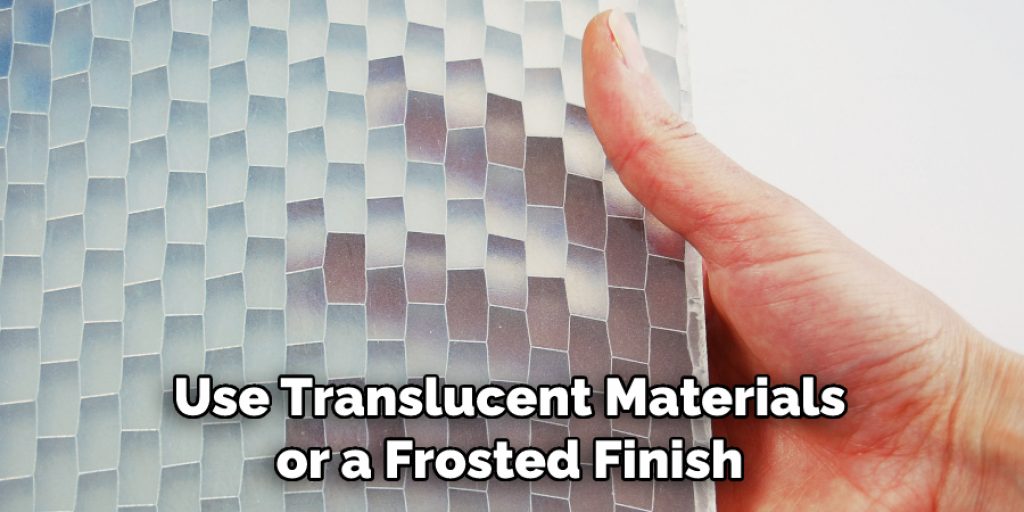
Conclusion
With these simple and effective methods, you can block fluorescent lights and create a more comfortable, productive work environment. Whether you choose to install light diffusers or use tinted glasses, these solutions are easy to implement and can greatly impact your overall well-being.
So go ahead, try out some of these strategies, and start experiencing the benefits of a more comfortable work environment today! Thanks for reading our post about how to block fluorescent lights at work.

